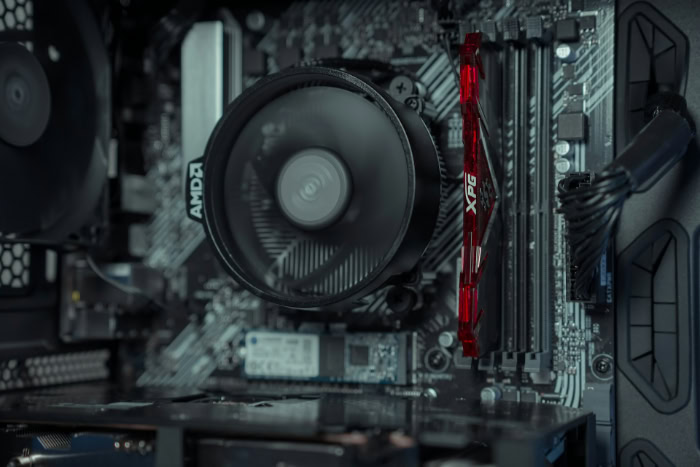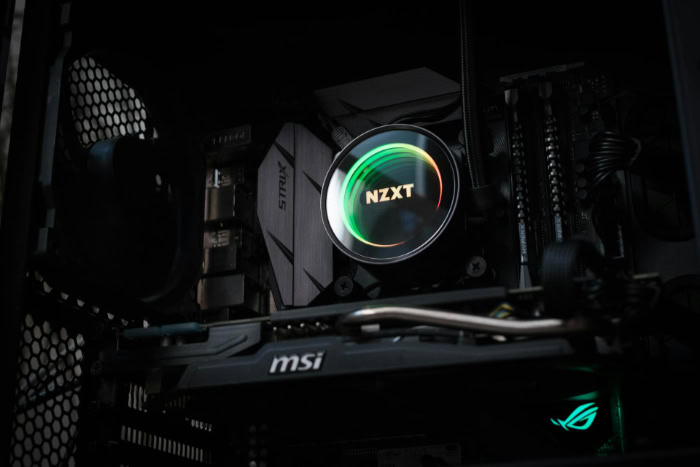Stock CPU Cooler vs. Aftermarket: What You Should Know

Building a PC can be as much about managing heat as it is about picking processors and graphics cards. For many, the question arrives early: is the factory-supplied CPU cooler enough, or should you look beyond the basics? Plenty of first-time builders run with stock solutions and never look back, at least until their system starts getting noisy or workloads push temperatures to uncomfortable levels.
Others swear by aftermarket coolers for extra headroom, quieter operation, and the freedom to tweak performance.
Cooling Performance and Thermal Headroom
Choosing a CPU cooler plays a direct role in how well your processor stays within safe thermal limits, especially under heavy load. Factory-supplied (stock) coolers are designed to offer basic functionality.
However, those seeking a cooler, quieter, or higher-performing machine often look to aftermarket options for extra peace of mind. Heat management stays at the core of both system stability and long-term reliability.
Baseline Temperatures with Stock Units
Out of the box, most mainstream CPUs include a stock cooler designed to maintain acceptable temperatures during typical operation. Idle temperatures often settle between 35 to 45°C, depending on the surrounding environment and case airflow.
Under moderate to heavy workloads, such as gaming or content creation, these numbers can climb to 70°C or even higher. Most modern CPUs are engineered to tolerate spikes up to 95°C before throttling performance to avoid damage, but running close to those limits restricts both performance and comfort.
Safety margins with stock solutions can be slim. Extended high loads, such as video rendering, compiling code, or playing the latest titles at high settings, can push temperatures near thermal throttling thresholds.
Once the CPU senses potential risk, it automatically scales back speed to protect itself, resulting in a dip in performance.
Aftermarket Cooling Gains
Upgrading to an aftermarket cooler opens the door to superior thermal management. Larger fin stacks, direct-contact heat pipes, and larger or dual fans enable more effective heat dissipation compared to standard units.
Some builders even opt for all-in-one liquid coolers, which use radiators and coolant to move heat away from the CPU more efficiently.
With a quality aftermarket air cooler, idle temperatures often drop into the high 20s or low 30s°C. Peak loads that would have pushed a stock cooler past 80°C can settle between 55 and 70°C, depending on room temperature and case design.
Liquid cooling systems may drop load temperatures even further, often staying under 60°C even in challenging scenarios. Sustaining lower temperatures not only keeps the boost clock running longer but also maintains a more consistent level of performance throughout intense sessions.
Impact on Lifespan and Stability
Managing heat effectively helps protect your investment. CPUs subjected to high temperatures for extended periods may experience gradual silicon degradation, which can lead to instability or a shorter usable life.
Lowering average operating temperatures preserves the processor’s electrical pathways and minimizes the risk of errors or crashes, especially important for professional workloads or long gaming marathons.
Systems that maintain a cooler profile also tend to be more stable over time. Occasional temperature spikes are less likely to cause performance drops, while smoother thermal behavior supports better overall responsiveness.
By keeping the CPU comfortably below its maximum rated temperature, builders can worry less about throttling and more about getting the most out of every session, no matter how demanding.
Noise Characteristics

Thermal performance often gets the spotlight in cooling discussions, but noise can have just as much impact on the satisfaction of using a PC. Cooler selection influences more than just temperatures; it shapes the overall system’s acoustic profile.
While some users don’t mind a little fan noise, others prefer their setup as quiet as possible, especially for everyday use or in peaceful workspaces.
Acoustic Profile of Stock Coolers
Stock coolers use compact fans to fit most cases and keep costs down. Smaller fan blades need to spin at higher rotations per minute to shift enough air for safe cooling.
During routine tasks, a stock cooler often hums softly, but once the processor heats up, RPMs quickly spike. That sudden ramping can introduce an audible whine that stands out against normal ambient noise.
The frequency tends to be high-pitched, making it hard to ignore in quiet environments. For systems sitting under the desk or tucked away, it may not matter much, but for open setups or living-room media centers, sudden bursts of sound soon become distracting.
Quieter Engineering in Aftermarket Options
Aftermarket coolers take a more sophisticated approach to silence. Engineers design them with larger fans that can move the same amount of air at significantly lower speeds.
Using bigger fans keeps airflow high while reducing pitch and overall noise levels. Many models employ advanced fluid dynamic or hydrodynamic bearings which further suppress mechanical sounds, smoothing out operation and extending fan life.
Some premium coolers go a step beyond by using rubber dampers or mounting systems that absorb motor vibrations before they travel through the case. On liquid coolers, larger radiators allow fans to work less intensively, and in some cases, pumps operate almost inaudibly.
The result is a cooling experience that remains unobtrusive, even during heavy workloads or gaming sessions.
Balancing Noise vs. Airflow Curves
Personal noise tolerance shapes the perfect airflow balance. Many modern coolers, both air and liquid, come with adjustable fan profiles through motherboard software or integrated controllers.
Users can select a silent mode, trading a few extra degrees for near silence, or opt for balanced and performance profiles to keep temperatures lower during intensive use.
The flexibility to adjust this balance ensures everyone from audiophiles to power users finds a setting that matches their needs. Those who want a nearly silent machine can achieve it with the right combination of cooler, fan curve, and case design, while performance fans can maximize airflow with only marginal noise increases when needed.
Tuning the acoustic profile becomes just as much a part of the PC build as assembling the hardware, allowing each user to shape their own ideal computing environment.
Overclocking and Performance Scaling

Unlocking extra performance from a CPU through overclocking remains a popular pursuit among PC builders. Squeezing a few hundred extra megahertz or allowing higher boost frequencies can produce smoother gameplay or trim render times, but improved cooling becomes essential as speed climbs.
The type of cooler has a direct influence on how far a chip can be pushed before running into thermal walls that limit those gains.
Stock Cooler Limitations
Stock coolers place modest upper limits on what most processors can achieve beyond factory settings. While suitable for everyday tasks and stock speeds, stock units quickly reach their thermal ceiling once users try to add voltage or adjust clock multipliers.
Processors from AMD and Intel include performance-boosting technologies like PBO (Precision Boost Overdrive) or TVB (Thermal Velocity Boost), but these features rely on available thermal headroom. When heat builds faster than the cooler can dissipate it, boost frequencies become fleeting or entirely out of reach, and sustained overclocking becomes impractical.
Sudden spikes in temperature usually prompt the system to throttle clocks, negating any overclocking effort and keeping real-world performance little changed from default settings.
Air Towers vs. AIO Liquid for Overclocking
Serious overclocking often calls for a more capable cooling solution. Large air towers equipped with multiple heat pipes and increased surface area allow heat to be transferred and dissipated much faster than stock coolers permit.
For moderate overclocks, a premium air tower often keeps temperatures in check, providing the needed stability for everyday gaming or productivity boosts. Many builders appreciate them for their reliability and easier maintenance.
For those targeting aggressive overclocking or aiming to keep flagship CPUs cool under heavy all-core loads, all-in-one (AIO) liquid coolers step in. Radiators with higher capacity allow heat to transfer away from the CPU more rapidly, and the larger cooling area helps maintain lower temperatures even at high voltage.
Liquid cooling handles heat spikes especially well, supporting larger sustained overclocks without hitting critical temperature limits.
Real-World Gains
Well-managed thermals clear the path for real performance improvements. Keeping CPU temperatures low enables higher sustained boost clocks, which translates to noticeable gains.
In demanding games or creative applications, even a 5-10% improvement in average clock speed can mean several extra frames per second in graphically rich scenes, or noticeably faster rendering and export times for photo, video, and 3D projects.
Having cooling overhead not only opens the door for experimentation but also guarantees a more consistent experience. Unchecked heat can cause inconsistent performance and unexpected slowdowns, but a quality aftermarket cooler helps ensure each workload or gaming session delivers on the CPU’s full potential.
Upgrading the cooling solution transforms overclocking from a risky gamble to a practical way to get more value out of your hardware.
Value and Budget Considerations

Every PC build brings some level of budget awareness, whether the goal is simply to get up and running or to extract every ounce of performance possible. Cooler selection directly impacts both initial build cost and the overall value of the system, making it crucial to weigh cooling needs against other hardware priorities.
True “Free” Cost of Stock
Stock coolers come bundled with most non-enthusiast CPUs, effectively costing nothing extra beyond the price of the processor. For users who stick to light tasks such as browsing, office work, media streaming, or casual gaming, the included cooler often proves perfectly adequate.
It handles baseline thermal needs, runs decently quiet under light workloads, and requires no extra investment. Skipping an aftermarket cooler keeps the build simple and leaves extra cash for other components or accessories. For entry-level and budget systems, relying on the boxed cooler helps maximize every dollar spent.
Price-to-Performance Tiers
Aftermarket cooling introduces a wide range of options, each with distinct cost and performance profiles. Budget air coolers in the $30 to $60 range can offer substantial improvements in both temperatures and noise levels over the default solution.
Many mid-range builds gain significant benefits here, securing quieter operation and reasonable overclocking headroom.
Moving into the $100 to $150 space, all-in-one 240 mm liquid coolers bring even greater thermal performance, more flexible case placement, and often, sleek aesthetics with features like addressable RGB lighting. Flagship air coolers can also occupy this range and come close to matching their liquid counterparts under many workloads.
Prices higher than this push into premium territory, where diminishing returns start to set in. Spending more may gain a few degrees, special materials, or extra visual flair, but thermal improvements become much less dramatic compared to the jump from basic to mid-tier options.
Opportunity Cost
Every dollar put toward a premium cooler is a dollar not spent on components like the graphics card, storage, or display. For many popular games and tasks, a better GPU or faster SSD can boost real-world performance or user experience more than an ultra-high-end cooler.
Careful consideration of where to allocate budget often yields a more balanced and satisfying PC, rather than chasing the absolute lowest possible temperatures.
Those who never intend to overclock or stress their CPU to the limit may find their money better spent elsewhere in the build. But for users demanding silence, tackling intense workloads, or pushing hardware to the edge, investing in cooling makes sense as part of a well-rounded upgrade path.
Finding the right balance ensures optimal performance without unnecessary overspending.
Compatibility and Installation Factors

Selecting a CPU cooler involves more than just matching performance to needs. A cooler must fit the specific dimensions of a user’s build, work with the chosen CPU socket, and suit personal preferences regarding setup and maintenance.
Overlooking compatibility can cause delays, frustration, or unexpected expenses partway through a build.
Physical Fitment Checks
Before purchasing, careful measurements of available space inside the PC case are essential. Large air coolers can interfere with tall RAM heatsinks, while the width and height of the cooler itself may conflict with side panels or other case features.
Most cases specify a maximum supported cooler height, so double-checking dimensions helps prevent disappointment later. For liquid coolers, available space for radiator mounting is crucial.
Some cases only fit 120 mm or 240 mm radiators, while others support larger 280 mm or 360 mm units. Ensuring room for both length and thickness of the radiator, including clearance for fans, keeps installation straightforward and avoids headaches during assembly.
Socket & Mounting Kits
Both AMD and Intel offer a variety of CPU sockets, and cooler mounting hardware must support the specific platform for a secure fit. Many modern coolers come bundled with universal mounting kits, but double-checking support for your exact socket can save time and prevent compatibility issues.
Backplates and mounting brackets may differ substantially between generations, so planning for future upgrades or a platform switch also matters. For builders hoping to reuse a cooler on a next-generation motherboard, looking for models with upgradable kits or confirmed future socket compatibility adds an extra layer of value.
Ease of Install & Maintenance
Not all coolers are equally easy to install. Larger air towers may require careful placement to avoid bending fins or scraping knuckles in tight cases.
Thermal interface material (TIM), often provided in small packets, should be applied evenly for the best performance, and some coolers come pre-applied for convenience. Liquid AIOs demand mounting both the pump on the CPU and the radiator somewhere inside the case, which can be tricky with limited cable reach or tight spaces.
Maintenance also varies. Air coolers with dense fin arrays collect dust over time, so occasional cleaning with compressed air helps preserve peak performance.
Liquid coolers generally require less regular attention, but pump reliability becomes a concern in long-term builds. Pumps can eventually fail after several years, so picking reputable brands and reviewing warranty terms brings peace of mind.
Factoring in installation and upkeep helps ensure a trouble-free experience for the life of your build.
Conclusion
Stock CPU coolers deliver reliable cooling for basic setups, office tasks, light gaming, and users who have no plans to overclock or run demanding software. They offer an easy, cost-effective solution and keep builds straightforward for anyone not pushing their system to its limits.
For many, especially those staying within the factory settings, there is no urgent need to upgrade.
Aftermarket coolers come into their own when demands rise or expectations shift. Users tackling heavy workloads such as gaming marathons, video rendering, or scientific computing gain from lower temperatures and more consistent performance.
Those who value a quiet working or gaming environment will appreciate the reduced noise and smoother fan operation a larger, well-engineered cooler can deliver. Enthusiasts seeking to overclock or unlock every last bit of performance from their CPU also benefit, as superior cooling heads off throttling and helps maintain higher speeds under load.
Balancing your goals and budget against what each cooler offers makes all the difference. Stock options get the job done for simple needs, while aftermarket choices unlock potential, comfort, and peace of mind for more specialized builds.
With the right match, your PC delivers the experience you expect, tailored to what matters most for you.


